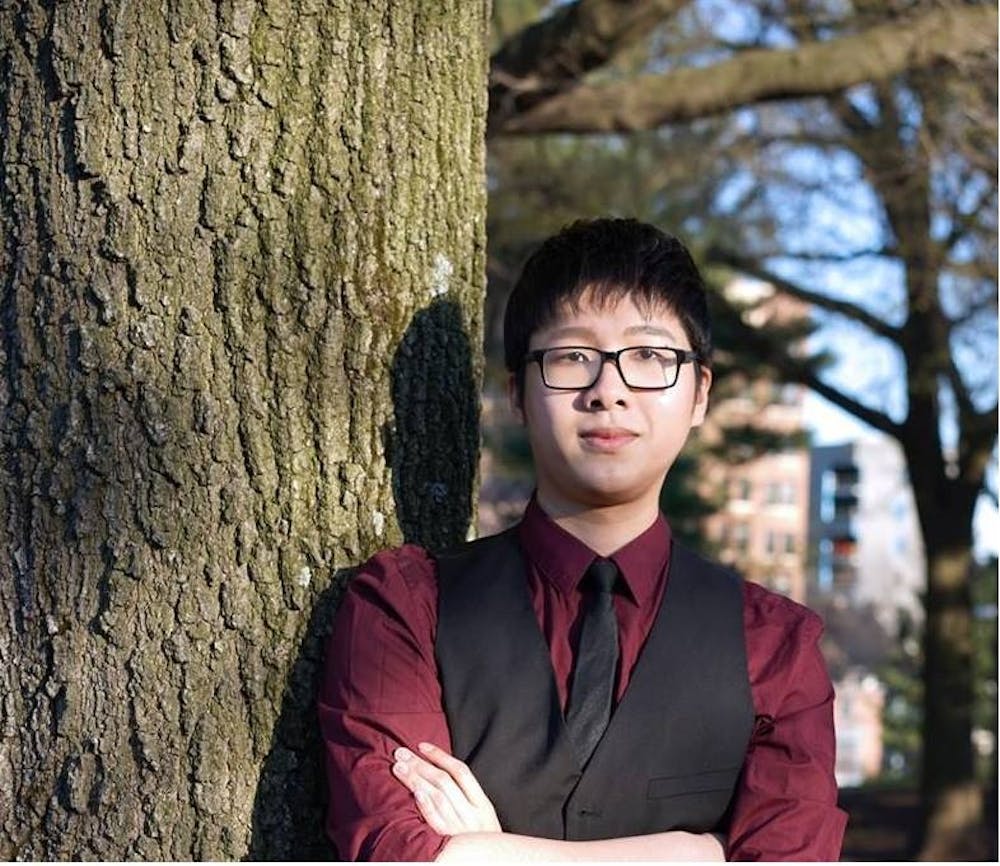Cardiac surgery research is something recent Hopkins alumnus Tom Zhang has always wanted to do. Thanks to the Hibino Lab at the Johns Hopkins Medical Institute, his dreams of helping cardiac patients are being realized so soon after graduation.
Zhang, a Molecular and Cellular Biology major from the Hopkins Class of 2016, currently works as a lab technician under the mentorship of principal investigator Dr. Narutoshi Hibino. At the beginning of September, Dr. Hibino hosted a 3D bioprinting symposium.
Over 200 Hopkins students and faculty attended Dr. Hibino’s seminar, where he presented on one of their recent projects to bioprint beating cardiac tissue from stem cells for patients with heart muscle damage.
Zhang describes the process of printing the tissue as slightly different from typical 3D printing.
“Compared to traditional 3D printing, we don’t need a scaffold. Instead, it has a needle array,” Zhang said. “According to [the cellular composition of heart tissue], we create 3D ball clusters called spheroids and just stick them on the needle like shish kabobs.”
When the balls are removed from the needles a few days later, Zhang says that continued tissue growth then fills in the holes.
“Let it grow for a few more days and there will be a nice solid tissue that is beating,” Zhang added. “We’ve shown that it can beat with your heart.”
Zhang says that this viable tissue is important because it can significantly help cardiac patients.
“One of the main purposes is for cardiac patients, [as] they have severe heart or cardiac tissue damage,” he said.
Besides the 3D bioprinted cardiac tissue, Zhang is also involved in several other projects. Among those is a project to research and develop biodegradable grafts that are used when tissue is implanted. Zhang praises these grafts for their promising benefits.
“The rationale behind biodegradable grafts is that you want the graft to degrade at the same time that the tissue will regenerate to have sufficient strength so that when the graft finally degrades, the new tissue will have grown,” Zhang said. “But it’s hard to balance strength versus speed of degradation.”
Zhang’s first research experience was in high school, when he studied HIV in a summer program. His experience inspired him to work with HIV at Hopkins, where he joined the Clements Lab under Professor Janice Clements, whom Zhang lauds as a pioneer in HIV research.
“She discovered [that] HIV was a lentivirus, rather than a leukovirus. She changed the entire implication of HIV,” Zhang said.
However, after two years, Zhang decided that he wanted to switch and try translational research.
“[I decided it was] time to go into some engineering, translational science so that I can see the light at the end of the tunnel. Ican see the product that we are going to make.”
This is Zhang’s second year at the Hibino lab. He credits his mentor Dr. Hibino for helping him develop into a researcher.
“Before this, I was just your average person in a lab just doing work. Grunt work, work, work,” Zhang said. “But now [Dr. Hibino] lets me write grants, write IRBs, write proposals, collaborate with other labs and has helped me develop my lab skills in a more holistic fashion.”
Zhang also says that the members at his lab help provide a supportive environment.
“They all have MDs, [as they are] cardiac thoracic surgeons. They have a lot of experience in the field [and] they are all very nice…They listen to me, we listen to each other, [and] it’s a really great communication process.”
As for his future career, Zhang is looking forward to hearing back from medical schools within this next year. In terms of research though, he knows the process is long.
“Our ultimate ultimate goal, maybe 10-20 years, is to be able to 3D bioprint a patient’s heart and do the transplant. We are starting small with a small patch of tissue. We want to perfect the tissue, get it to trials, and to help the cardiac patients.
I do all the in vitro work, all the analysis, I see the data first, and it’s amazing how it can return to native state. I think that’s how we can affect patients in the future.”
Dr. Hibino adds that this is just a small step to the amount of change he wants to do.
“We will improve the medical field and change the clinical practice and change the medical treatment in the field. That’s the history of Hopkins,” Hibino said. “We are here to create the next history of Hopkins.”
More info on the Hibino lab can be found on http://www.ongweb.com/hibinolab/





